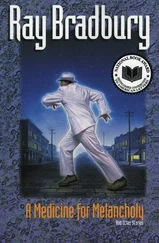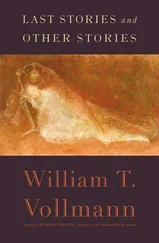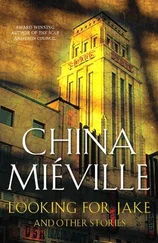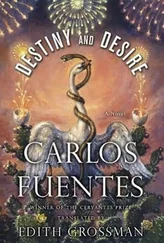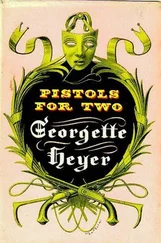But they don’t understand a thing you say.
— Mother, the name doesn’t matter, what matters is what happened …
— What names do the gods use among themselves? Who knows?
— You continue conceiving, Mother, the boy said, almost crying now, holding the woman sitting on the cane chair, don’t keep asking these horrible questions, the boy said, crying, pleading with his mother, begging her, and he shows his devotion by his tears, he’s strung tight as a bow, sending the arrows of his misery in every direction, but he surrenders as well, trying to show that he’s been overcome, that the true anguish lies in the son’s breast, in his, not his mother’s, that his sorrow and sense of disillusionment would outshine hers any day, that her tricks and her moods always fall on his shoulders, but it doesn’t matter, he cries, if that’s what it takes to make her happy, he’ll just die again, and now she is the one who is sobbing, no, if it means you don’t have to die every time the dog appears …
The woman calms down and picks up her sewing, she arranges it in her lap and looks at you, asking herself, asking you, can’t miracles be repeated? How come it’s a miracle to give birth without sin the first time and a crime the second? Isn’t it possible to give birth to two gods, one good, the other bad? Tell me, then, who is going to save the imperfect and the bad, those who most need God?
Each time his mother asks one of these questions, the boy punctuates it by throwing an egg against the wall. In his face you see the rage of your country, which is the rage of the injured, the humiliated, the impotent, the insulted; you recognize it because you have seen it everywhere, all your life, in school, at work, among the engineers and among the masons, and you were its counterpart — your excessive self-confidence, the arrogance revealed in the ease with which you ignore the obstacles, and the price of those powers, which is insensibility and finally indifference, the twin of death … And then you wonder if the only people spared those destructive extremes were the architect Santiago Ferguson and his daughter, Catarina, if some quality possessed them, and if they possessed some quality that went beyond the humiliation of some and the arrogance of others, and what that quality would be called, that saving grace … It must be something more than what my brother and I say we are: reasonable people. You and I, brother.
Another egg bursts hatefully against the wall and you think of the walls of the architect Ferguson that structure space, opening and unifying it, but none of that concerns the seamstress with the darkened temples. Instead, she’s worrying about a name, more than a man, a name; you had the man, the boy says; I want the name, she replies, because the name is the man, the name is what says what he is, the name is the same as the thing it names, that is my faith, that’s what I believe, what I believe, what I believe …
But then she quiets down and reaches for two boards, which she makes into a cross. She nails the cross together and hands it to you. You cannot reject their gift, because they’re giving you something — now at last you know — that they expected from you.
13
Between the faithful and the doubting, between the troops and the television teams, the engineer Pérez made his way toward the shack where Doña Heredad Mateos was being filmed for the evening news, dressed in her Adidas outfit, and he shouted to the foreman, Rudecindo Alvarado, turn off the traffic light, and to the believers who were inside the shelter, did they see anything now, and yes, they answered yes, yes, because they were seeing what they wanted to see, the engineer shouted, see if you can find someone without mud in his eyes and a frog in his throat, someone who sees and speaks clearly, you and you, look, they’re going by, and you two, don’t say no, look, what do you see, frankly? nothing, nothing but a sheet of glass, right? just put in, and now, Rudecindo, turn on the traffic light that shines in the window of the shack, and now if I’m not mistaken, now the figures appear again, right? It’s only an optical illusion, a reflection of the prints the old lady stuck on the wall when she moved in here to do her sewing, it’s the candles under and in front of the prints, combined with the light of the traffic signal, which never goes off but is always changing from red to green to yellow, that’s what causes the reflection of the Mother and the Child, are you satisfied? Now go back to your homes, break it up, nothing’s going on here, and you, good woman, you can keep the proceeds from what you started, nobody is going to take them from you, don’t worry, cash the check they gave you to wear that sports logo, and God be with you, señora, I tell you nothing has happened here, and you, Jerónimo, go back to work, nobody is being accused of anything, but we have to put an end to this farce and get back to work, we’re way behind schedule.
— And my dress? said Doña Heredad, managing to look impassive through it all.
— What do you want, señora? Dress any way you like, pink pants or black skirts, it’s all the same to me.
— My wedding dress, I mean.
— Ooooh … Aren’t you a little old for that kind of game, you old flirt?
— The one I was sewing, where is it? Who took it? asked Doña Heredad.
She was about to cry Thief! Stop, thief! and Pérez the engineer was afraid that there was no limit to the capacity of the old woman, Señora Mateos, for inciting riots, when a silhouette appeared against the suffocating alkaline, midday sun that announced the approach of an afternoon storm; from the depths of the construction site the architect appeared, one of the Vélez twins, who knows which, it was impossible to tell them apart, walked toward them, followed by a dog. He carried a cross in his hands, two boards nailed together, and he reached the watchman’s shack and scrambled up some stones and planted the cross firmly on the roof.
14
When they led you out of the Art Nouveau house which looked Neoclassical from the outside, the toothless nun Apollonia, followed by the mutilated nun Agatha and the blind nun Lucía, dressed entirely in orange silk, Agatha with her braids entwined with flowers, Apollonia in her straw hat, and Lucía with a shepherd’s staff, you wanted to think that it was your teacher, Don Santiago, who led you here, asking you to view the ordinary with fresh eyes so as to make it yield its secret, which for the architect is the composition of a dispersed and hidden structure that only the artist knows how to see and reunite. You ask yourself if your brother — I, José María — couldn’t or didn’t want to see what you saw, or, seeing it, chose to pretend that he hadn’t, that the lodestone wasn’t there but in the watchman’s shack, where Catarina Ferguson’s wedding dress lay, waiting.
Before you answered your own question, you were blinded by the glare of the midday sun, as the door of the house swung open and the nuns said these parting words, my brother:
— Leave us. Don’t worry about us.
— A nun is only a forgotten bride.
— And never bring us flowers.
— Do you know what the dead feel when flowers are put on their graves? The flowers feel like nails. The living don’t know that. Only the dead know. Each flower is one more nail in the coffin.
— Don’t ever come back. Please.
— Leave us in peace. Please.
— They are nails. They are sweet-smelling poison.
— Your work here is completed, said the blind Lucía.
— Things are as they are, said the mutilated Agatha.
— The dates can change, said the toothless Apollonia.
— But nothing can change the fatality of time, said the blind Lucía, and she opened the door onto the light of a Mexican noon.
Читать дальше

